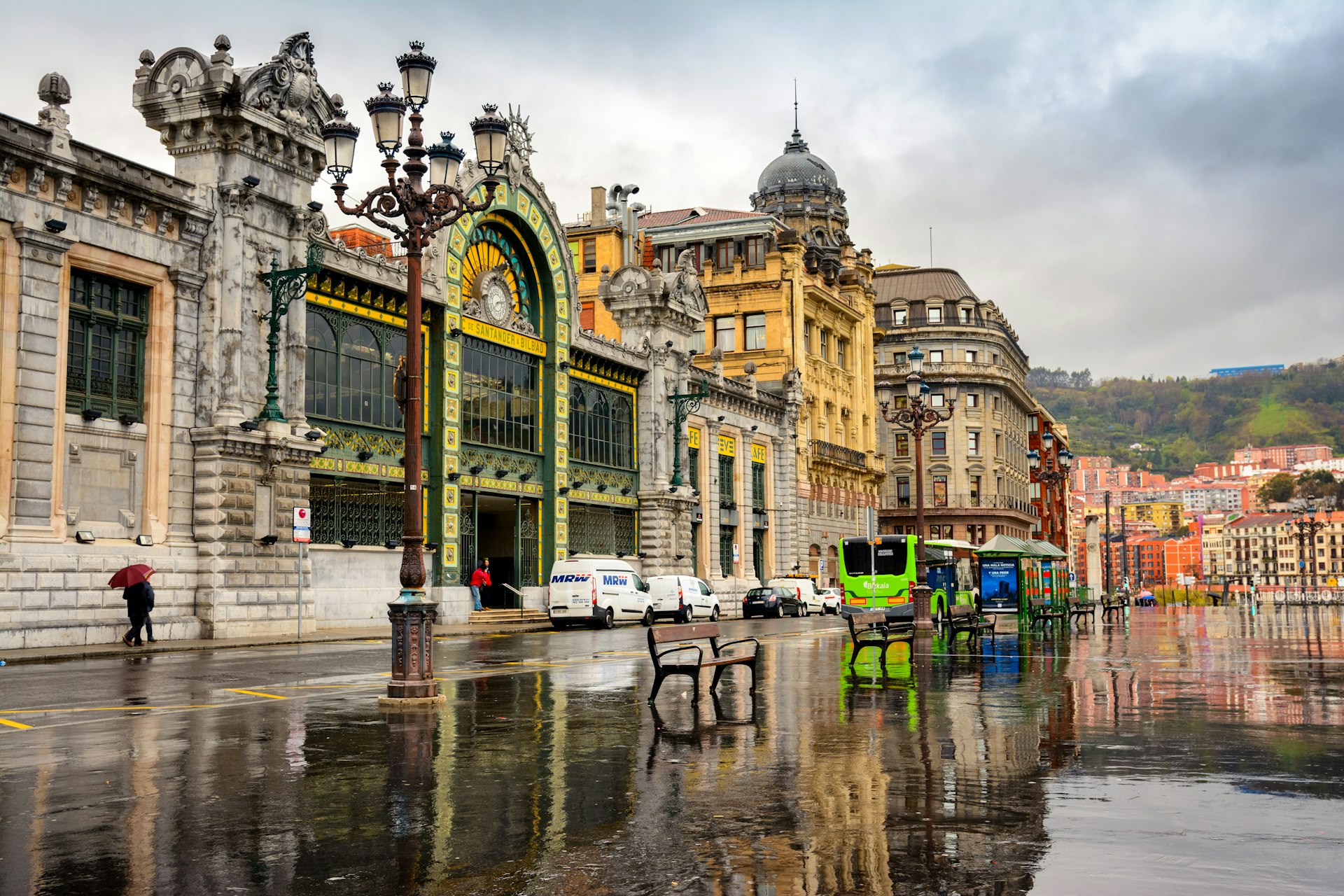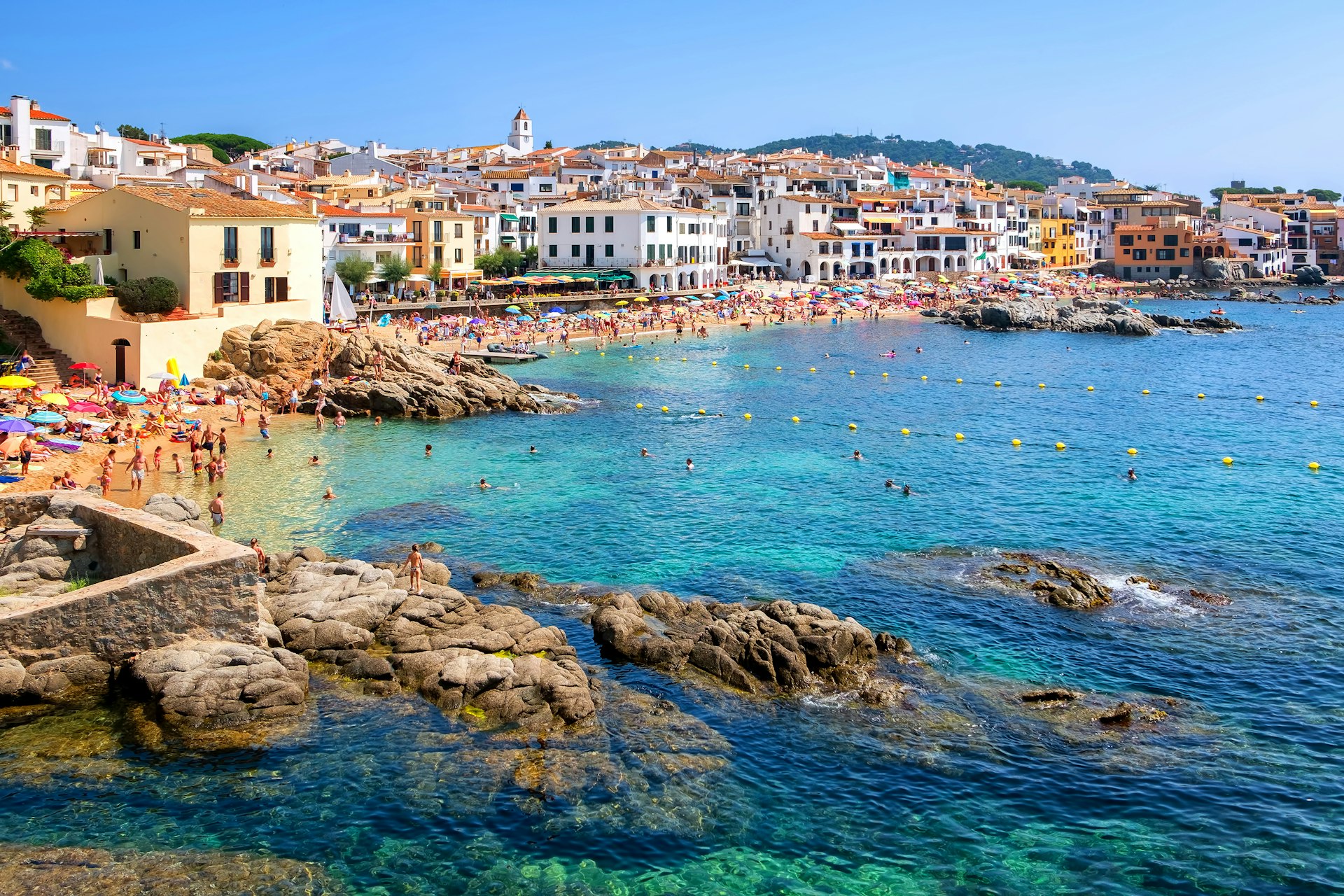Criss-crossing destinations around Spain, whether by land, air or sea, is easy and convenient due to Spain’s efficient multi-modal public transport infrastructure, which has also been upgraded significantly over recent years.
Spain also gets high marks for universally accessible travel. Visitors with reduced mobility can move around fairly easily compared to other European countries. The country’s public transport infrastructure, such as trains, buses and terminals, has been designed for accessibility, offering specially designated spaces and adapted features for people with disabilities and anyone with mobility challenges, young and old alike.
Get around with ease on Spain’s train network
RENFE is Spain’s national railway company that runs about 5000 trains each day across the country. The best and fastest way to travel long distances in Spain is by taking the AVE (Alta Velocidad Española), which uses Madrid as its principal terminal and travels to many of the country’s principal cities.
AVE trains are comfortable, efficient and incredibly fast. Traveling up to 310km (192.6 miles) per hour, it connects Madrid to Barcelona — over 600 kilometers away — in a mere 2.5 hours.
The RENFE Alvia trains, which connect the northern cities and regions to Madrid, are also high-speed trains with stops along the way. The RENFE Avant mid-distance high-speed trains or the Media Distancia (mid-distance) trains are the most time-savvy option for nearer day-trip destinations.
The most recent addition to RENFE’s fleet are the high-speed, low-cost Avlo trains with tickets. This is the best option for passengers with reduced mobility — all entrances to their carriages are at platform level and feature H seats for travelers in wheelchairs, as well as adapted toilets for people with disabilities.

The bus is the best if you’re on a budget
For budget-conscious travelers, the bus is the best way to move around Spain if you don’t mind the longer travel times. It’s also the preferred way for locals to get around, given its convenience, economical ticket prices and connections to smaller towns where trains do not pass.
There are several bus service providers in every Spanish city, and many of these fleets offer quite a comfortable ride with reclining seats and wifi on board to make traveling over long distances a smooth and pleasant experience.
While tickets can be directly purchased from the bus driver, it is best to reserve and buy them in advance. Keep in mind that the most popular routes and times tend to get full pretty quickly.
Tip for finding a bus service
To find out which bus services are in operation at your departure point, Movelia.es provides the most comprehensive information on available national bus routes (and even international ones), schedules and purchasing, and has multiple language options.
Planes are often the best option to get to Spain’s outlying islands
Flying is the quickest way to travel around Spain, and the best option to get to its outlying archipelagos — and hotspot tourist destinations, the Balearic Islands east of the peninsula or the Canary Islands in the Atlantic. Spain has regular domestic flights operating across its nearly 60 airports; the principal ones are Madrid’s Adolfo Suárez Madrid-Barajas Airport and Barcelona’s El Prat Airport.
Iberia Airlines is Spain’s national carrier that regularly offers reasonably priced tickets if you book in advance. Its low-cost brand Vueling, which regularly codeshares with Iberia, also offers several domestic daily flight options with affordable fares.

Take the slow route – travel around Spain by boat
Many of Spain’s top cities and islands are also important cruise ports, including Barcelona, Cádiz, Valencia, Ibiza, Palma de Mallorca, and Las Palmas (Canary Islands). If time is not an issue, traveling by boat or ferry across from the Peninsula across the Mediterranean or Atlantic waters is a pleasant, albeit drawn-out travel experience. This is also the best option if you wish to take your car, motorbike or bicycle on board.
Spain’s main shipping lines, Baleària and Trasmediterránea, offer regular trips from main cities in the peninsula as well as hourly connections in the Balearic Islands (between Ibiza, Mallorca, Formentera and Menorca) and the eight main islands of the Canaries. Passengers have the option to book seats or cabins with beds.
Go green with Spain’s carpooling services
Car-sharing services are a popular and environmentally-friendly mode of transport for getting around Spain’s cities or regional towns. BlaBla Car is the most popular service that allows you to book car-share rides to several points around Spain. If you’re in the driver’s seat and seeking some company (or wish to share the gas bill), you can also publish your own rides, pick-up points and prices on the BlaBla Car website.
Not only is this a cost-effective way to travel long distances, but it’s also a great way to meet locals (and practice your Spanish!).

Accessible transport options in Spain
People with reduced mobility will find Spain a highly accessible and inclusive travel destination. All Spanish airports provide passengers with disabilities or reduced mobility free assistance services, from the moment you land to security and border controls and luggage collection. These services can be requested in the AENA (Spain’s state-owned airport operator).
If you are traveling by train, RENFE’s Atendo is a free service that passengers can request for assistance in transiting between stations, boarding and disembarking train carriages.
In Spain’s main cities, such as Madrid and Barcelona, terminals and stations are largely designed to give passengers full autonomy. Madrid’s Metro, for example, has installed universal accessibility features in all its stations, with over half of all stations fully accessible with lifts and ramps for wheelchair access. In addition, step edges are reinforced, and elevator signs and handrails have Braille markings.
Barcelona’s entire metro (except for two out of a total of 165 stations) is accessible and has advanced features such as directional devices for blind people and luminous door devices on trains. Local city buses have also been adapted for accessible travel, with tilts, ramps, and reserved spaces for wheelchair users and baby carriages, as well as Braille-embossed stop buttons.
